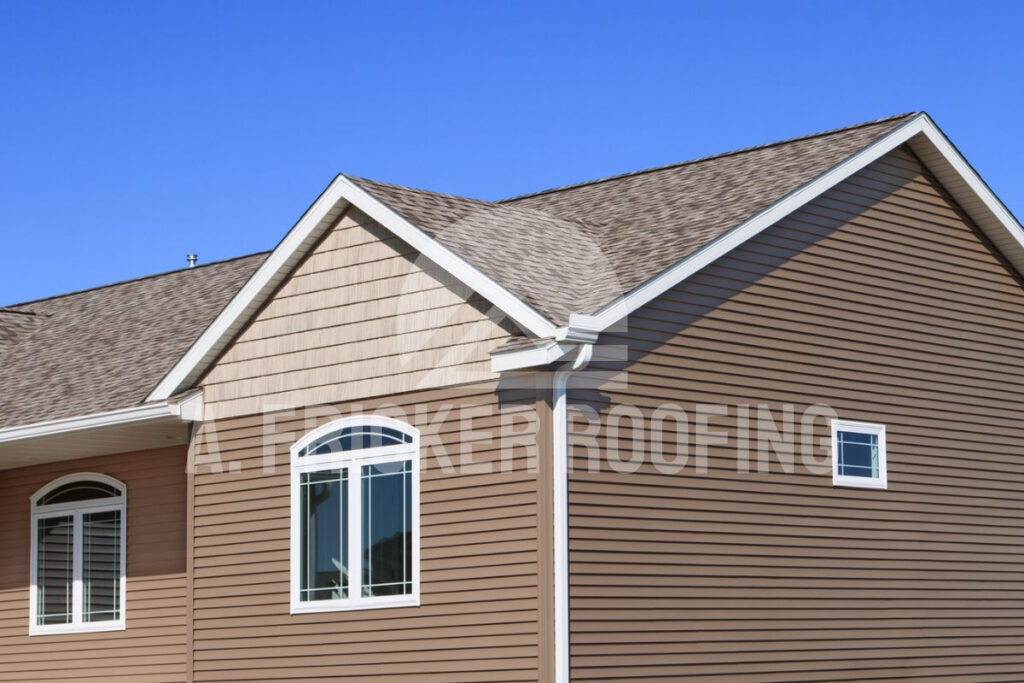Unfortunately, roofs don’t last forever, and replacing one can be expensive. Whether you’re dealing with storm damage or just old age, figuring out how to pay for a new roof can be stressful. But don’t worry—there are several ways to manage this cost without feeling overwhelmed. In this guide, we will answer the question of how to pay for a new roof and explain the most common payment options.
1. Cash or Check Payments
If you saved up for the roof or have a sufficient amount in an emergency fund, paying with cash can be your best bet. Since roof replacement is a significant initial investment, paying with cash or check is often not a practical or favorable option among homeowners. However, this method is straightforward, helping you avoid interests and potential debts. Moreover, some roofing companies might offer discounts for cash payments, so it’s worth asking about any possible savings. Using a check provides a paper trail for the transaction, which can be helpful for record keeping and can work as proof of payment. Paying with cash or check can also facilitate better negotiations with your contractor, possibly resulting in lower costs or added services at no extra charge.
2. Payment with Credit or Debit Cards
If your roof is due for replacement but you can’t pay in full, then paying with credit cards can be the right choice. Homeowners who put their roof replacements on credit cards may qualify for benefits from their bank such as cash back. If you have sufficient credit limits or savings, these payment methods can be straightforward and quick, but be aware of high interest rates if you can’t pay off the balance quickly. In addition, credit cards often come with some offers, such as 0% interest for a certain period, say 12 months, depending on your credit card and score.
On the other hand, paying with debit cards is also an option. Rather than paying in cash, you can use debit cards for the final transaction. It will also help you maintain records of the payment. However, this option requires you to have enough funds available immediately, as it helps you stay debt-free.
3. Home Equity Loans or Lines of Credit
If you’ve built up equity in your home, a home equity loan or line of credit can be a smart way to finance your new roof. Some homeowners prefer it because it is a fixed and predictable loan.
A home equity loan provides you with a lump sum of money based on the equity you’ve built up in your home. A home equity loan comes with a fixed interest rate and set repayment terms, making it a reliable option for homeowners in the long run.
On the other hand, a line of credit works more like a credit card, with a revolving line of credit and variable interest rates. Both options generally offer lower interest rates than other types of loans, but it’s important to remember that your home is used as collateral. It can be a downside if you wish to sell your home soon or within the given payback period. If you fail to make payments, it could potentially lead to the foreclosure of your home.
4. Roofing Company Financing
Another reliable payment method for your new roof is getting it financed by a reputable roofing company or its partners.
Many roofing companies understand that a new roof can be a significant expense, so they offer financing options to help homeowners. Some companies provide their own financing plans, which can include low-interest or even interest-free promotional periods, while other roofing companies partner with other financial companies. This way, you can pay for your roof over time, which can make the expense more manageable. Just make sure to read all the fine print and understand the terms and interest rates before you decide.
5. Homeowner’s Insurance
If your roof has been damaged due to a storm or hail, your home insurance policy will generally cover some or all of your roof replacement costs, depending on the cause of the damage.
To benefit from your insurance policy, get your roof inspected by a roofer or document the damage yourself. Check your policy to review what types of roof damage are covered, as most policies cover damage from events like storms, fires, and high winds. After documenting the damage and taking detailed photos and videos, contact your insurance company as soon as possible to start the claims process.
After filing the insurance claim, an adjuster will likely visit your home to assess the damage and estimate repair costs. Keep in mind that routine wear and tear usually isn’t covered, so if your roof is simply old, insurance might not help.
At A. Fricker Roofing and Waterproofing in Tulsa, OK, we work directly with insurance companies to help home and commercial building owners get the most out of their insurance policies. From documenting and inspecting the roof to filing the insurance claim and installing the new roof, we handle it all for property owners.
For more information, check out these blog posts:
1. How To File A Hail Damage Roof Insurance Claim In Oklahoma
2. Dealing With Insurance Claims For Roof Damage In Tulsa
3. Will My Homeowners Insurance Cover Wind Damage To My Roof?
6. Personal Loans
If you’re looking to finance a new roof but don’t have much home equity, personal loans could be a good option. These loans are relatively easy to apply for, as they don’t require any collateral. Unlike home equity loans, personal loans can also be approved quickly, which is great if you need the funds urgently for your roof replacement or a new installation. However, the interest rates on personal loans might be higher compared to home equity loans, but this largely depends on your credit score. You can often choose repayment terms that work for your budget, making it a flexible option for financing your new roof.
Which Option Should You Choose?

Here is a quick recap of the available options we covered. This will help you choose the right payment method for your new roof.
1. Direct Payments
Using credit or debit cards can be simple if you have available credit, while cash or check payments avoid interest charges but require sufficient funds.
2. Home Equity
Home equity loans or lines of credit offer lower interest rates if you have built up equity and have no problem using your home as collateral.
3. Roofing Company Financing
Roofing company financing can provide convenient and flexible payment plans directly through your contractor.
4. Insurance Coverage
If your roof damage is covered by insurance, that’s often the best route, as it can significantly reduce your out-of-pocket costs.
5. Personal Loans
Personal loans are useful for quick access to funds, especially if you have a strong credit score.
Do You Need Assistance From A Reputable Roofing Company In Tulsa, OK?
The payment option you choose should align with your future financial plans and goals. If you want to put your roof on a credit card, your credit score and future interest rates should affect your decision. Or, if you choose home equity loans, consider your long-term plans for your home. If you need help making the right decision, contact our team at A. Fricker Roofing and Waterproofing in Tulsa, OK.
We are dedicated to serving home and commercial property owners in the region. Our flexible financing options mean you don’t have to wait to replace your roof. We also help homeowners file insurance claims to ensure they receive the compensation they deserve. Contact us today at (918) 402-7167 and consult a roofing professional about your roofing needs.

